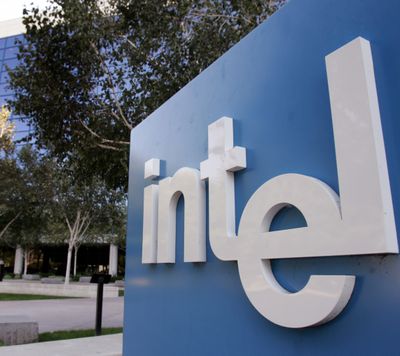Motley Fool: Among Dow success stories, 3 still show promise

The 30 companies in the Dow Jones industrial average are established, well-run, dividend-paying large-caps. They’re not all bargains, but here are some to consider:
Machinery titan Caterpillar (NYSE: CAT) is poised to profit from the industrialization of emerging markets. It has a strong track record of returning capital to its shareholders. Over the past five years, Cat’s grown its dividend payouts at an average rate of 10 percent annually, and recently yielded 1.8 percent.
Market-leading companies with strong fundamentals can turbocharge your portfolio.
• Semiconductor powerhouse Intel (Nasdaq: INTC), yielding 3 percent, owns the semi space like no one else. According to the latest figures out of IHS iSuppli, Intel widened its lead in the semiconductor market to a 10-year high in 2011, with an overall market share of 15.6 percent.
• General Electric (NYSE: GE), recently yielding 3.4 percent, has largely righted the ship with its GE Capital unit that generated the lion’s share of its problems during the financial crisis. In fact, GE Capital should begin paying a dividend to the parent company as soon as this year. GE has also done a great job shifting its strategy to more forward-looking growth markets – namely, energy and infrastructure.
These companies offer long-term investors a solid upside and limited downside. (The Motley Fool owns shares of Intel, and its newsletter services have recommended it.)
Ask the Fool
Q: What’s a stock option’s “strike price”? – C.G., Springfield, Ill.
A: It’s the price at which it can be exercised. Imagine you work for Holy Karaoke Inc. (ticker: HYMNS). You’re issued 1,000 employee stock options with a strike price of $10 each. A few years later, the company goes public, issuing shares of stock for the first time via an initial public offering (IPO). The shares are priced at $25 each, but a year later they’re trading at $40. At this point, you decide to “exercise” your options.
Since your options carry a strike price of $10, you’re entitled to buy up to 1,000 shares at $10 each – not the $40 that they’re going for on the open market. If you exercise all of them, you’ll fork over $10,000 to your company for 1,000 shares worth $40,000. You can hang on to them as long as you like, or quickly cash out for a $30,000 profit.
As you might suspect, it’s not exactly quite this simple. There are many tax issues to consider, and your option plan might have some special features. Read the plan carefully.
You might also read “Consider Your Options” by Kaye Thomas (Fairmark Press, $24).
Q: To buy a company’s stock, do I have to work for it? – K.F., Hickory, N.C.
A: Not at all. (Although some companies do offer employees stock options, stock grants or the ability to buy shares of company stock at a discount.) All you generally need is a brokerage account. You can learn how to pick a good brokerage at broker.fool.com.
Most major companies, and many smaller ones, are publicly traded. Examples: General Electric, Merck, Boeing, Kellogg, TiVo, Crocs, Garmin and Harley-Davidson.
My dumbest investment
I’d read a book on Warren Buffett in the mid-1980s and thought he was a smart guy. I read articles on him occasionally, noticing his big investments in Coke, etc. Then, in the late 1980s, I thought about buying some shares of his company, Berkshire Hathaway. They were about $4,000 each. I had that much cash in my IRA and thought, “Why not?” But then I decided that it was dumb to spend $4,000 for a single share and didn’t buy it. I could sure use that extra $118,000 of profit about now. – Pete, Alexandria, Va.
The Fool responds: Yes, those shares are now worth about $120,000 each, though Berkshire Hathaway also sports class-B shares, trading around $80. Berkshire’s class-A shares have trailing earnings per share (EPS) of $6,215, giving them a price-to-earnings (P/E) ratio of about 20.
By contrast, AT&T recently traded near $31 per share, with EPS of 67 cents, giving it a P/E of 47 and a steeper valuation. Focus on the big picture, not on just price. (The Motley Fool owns shares of Berkshire Hathaway, and its newsletter services have recommended it.)